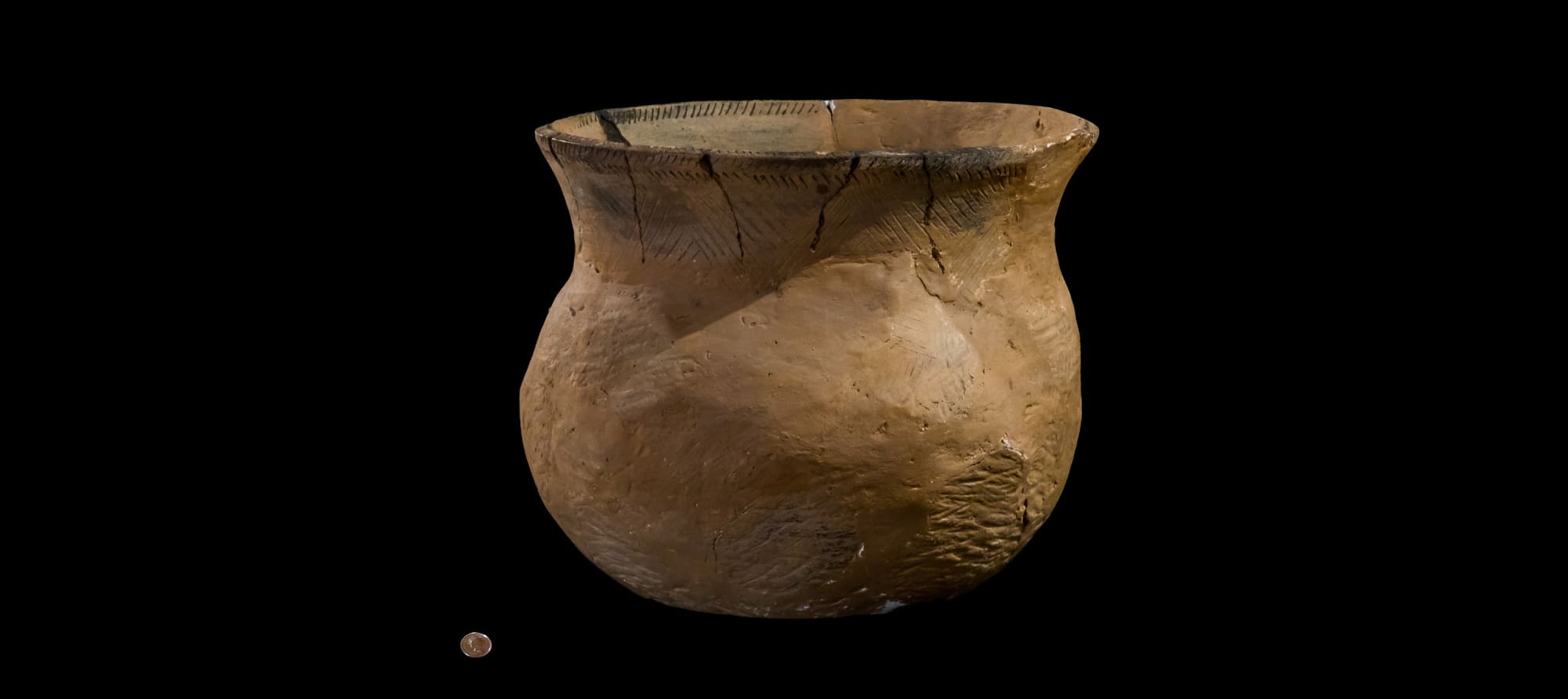Pottery – Rim Shards 004.99.323, 044.99.331 & 004.99.325, Reconstructed Vessel L988.D.010.719
Ceramics enter the technological repertoire of Indigenous peoples in the Great Lakes area around 3,000 years ago. The initial forms are simple conical pottery vessels with limited decoration, other than the impressions of cordage left in the clay as a by-product of the manufacturing process. This involved construction by the coil technique, possibly using fabric bags as a construction aid, followed by blending of the coil joins by application of a cord-wrapped paddle. Over the following centuries, various decorative techniques and motifs were added to the design portfolio. The first specimen shown here (both exterior and interior views), dating to about 1,000 years ago, incorporates such innovations as castellated rims, cord-wrapped stick impressions, and exterior punctates (holes) with corresponding interior bosses (bumps). The second specimen, a few centuries younger, retains elements such as cord-wrapped stick impressions, punctates and bosses (now reversed inside and outside, respectively), and castellations, but now includes a weakly defined collar also with cord-wrapped stick impressions and horizontally incised lines running down towards the neck of the vessel. A mend hole on the left side of this rim shard indicates that the pot had broken and been repaired with twine. The third specimen exhibits ranks of a tool-impressed oblique motif. Charcoal and ash residue visible on the exterior of this rim is occasionally accompanied by encrustations of carbonized food on the interior. This residue can be analysed for various components that reveal the nature of the food that had been prepared over time in the pot.

By the time these vessels were made, maize, beans, and squash—commonly referred to as The Three Sisters by Indigenous people—had become a staple of the diet. While initially simply added to an existing practice of small-scale gardening to encourage wild or semi-domesticated plants in the vicinity of hunter-gatherer base camps, larger scale horticulture led to full-scale agriculture involving hundreds of hectares of farmland within several centuries. The combination of maize and beans was the key to this development, as the complementary foods provided a new source of protein with all essential amino acids. Together with the ability to grow and store surplus food, this innovation contributed to population and community expansion, social and political change, and further technological change such as the development of longhouse villages accommodating hundreds of residents. It was farming villages such as these that French explorers visited at the beginning of the seventeenth century.




 Pottery Jar
Pottery Jar